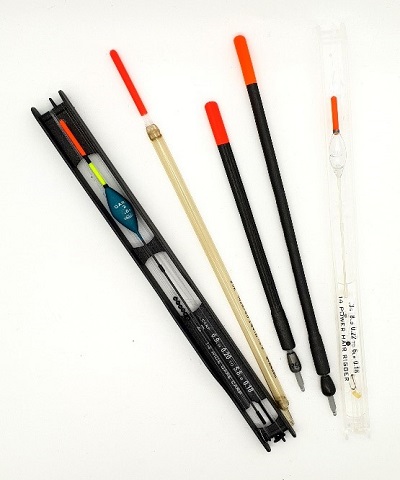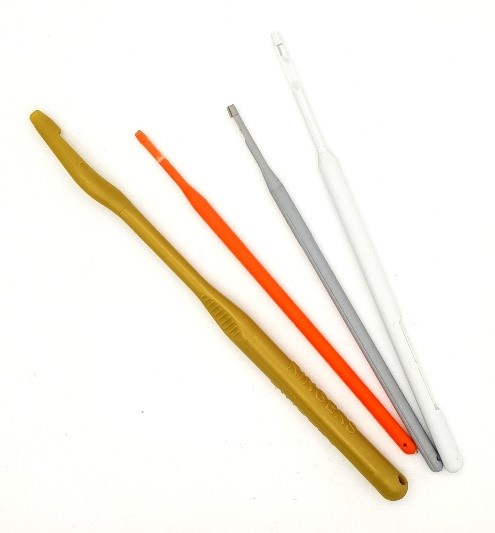Coarse Fishing Essentials Guide
Looking to start Coarse Fishing? Here’s our essentials guide to get you started!
No matter if you’re a casual day angler or serious match angler, Coarse Fishing is something over 2 million of us choose as our hobby. Pole, float rod or feeder, the choice is yours but here are a few things every discipline will need in their tackle box for a successful day’s fishing.
Hooks
There are two main types of hook, Eyed or Spade End. Both come in Barbed or Barbless version’s, which you use will be down to the rules of the water that you fish and secondly, personal preference.

Bait can be mounted directly to the hook which is the favoured method for Pole, Float or Waggler fishing. Baits such as soft pellet, corn or maggot are ideal for this type of fishing for many species included Roach, Rudd, Perch, Bream and Tench, not forgetting the greedy carp who will happily take most baits in the lake!
Another popular way to present your baits are on a hair rig, over the years several versions of the simple hair rig have evolved and banded, quickstop or bayonet hair rigs are now a very popular way of presenting the bait on a hair. Whether you tie these yourself or buy them pre-tied the choice is yours.
Weights and Feeders
If you want to Feeder or Ledger then you are going to need some sort of feeder or weight. Feeder’s have evolved over the years with the cage feeder being a firm favourite over time for lake or river fishing especially for Roach, Bream and Tench fishing.
In the last 20 or so years, the Method Feeder has become the go to method of fishing for many species included the much sought after Carp. The most popular version of the Method Feeder is now known as a Flat Bed Method Feeder which generally comes in two variations, in-line or elasticated.For ledgering the Arlesey Bomb is still one of the preferred weights though some of the new companies make weights in variations such as the Flat Pear, Square Pear and Distance.
When Float or Waggler fishing then you will be well prepared with a variety of split shot, probably the most popular being Anchor Double Cut Shot 8 with divider dispenser. Pole fishing has more finesse and the Preston Innovations Stotz, which comes in a range of sizes, have been the go to shot for you pole rigs for many years now.
Floats
Pole angler’s will need a few spare rigs usually already tied at home into a rig or alternatively, you can purchase these rigs already tied to suit different depths and target species if you’re not sure where to start tying your own.

Float rod anglers have the choice of many styles of floats, two of the main types are the Peacock Float or self-weighted Waggler. You can attach these to your line in various ways, the simplest is a split shot either side of the float or there are now products such as waggler adaptors or silicone float attachments that make changing your float mid-session a lot easier and removing the need to disassemble your complete rig to do so.
Line Clipper’s or Scissors
As above, some have one or the other while some anglers prefer to take both, the choice is your but if you do use braid then we would highly recommend that you invest in a good quality set of braid blades instead of trying to chew your way through with and ordinary pair of scissors!
Line
While ideally you will not loose every rig you have already tied nor all the line on the spool of your reels, spare line can at times be worthwhile keeping a small range in your box. Rig line is usually what you will need the most often on those day’s when nothing seems to be going right and the fish appear to be winning every battle!
If you have spare spools for any of your reels, take them along in your kit bag just in case or maybe keep your spare spools filled with a stronger or lighter line than you would normally use.
Disgorgers

I write Disgorgers as one is just not enough! They’re cheap and found in every tackle shop, they are an essential part of fishing tackle armoury. These allow you to safely unhook your catch and return the fish unharmed to the water. They come in various head sizes to suit the size of hook the you’re using so it is worth always having two or three of each size in your box as these are one of those items of tackle that always seem to be mislaid.
Unhooking Mat & Nets
On most fisheries you visit, they will now require that you need an unhooking mat. The size and thickness will generally depend on the species that you’re targeting though check the fishery rules prior to arriving.
Every angler will undoubtably need a landing net and handle, generally purchased separately, to land their catch. Again, the size you should purchase is down to the fish that you’re fishing for but for general coarse fishing we would recommend an 18-20” net head.
